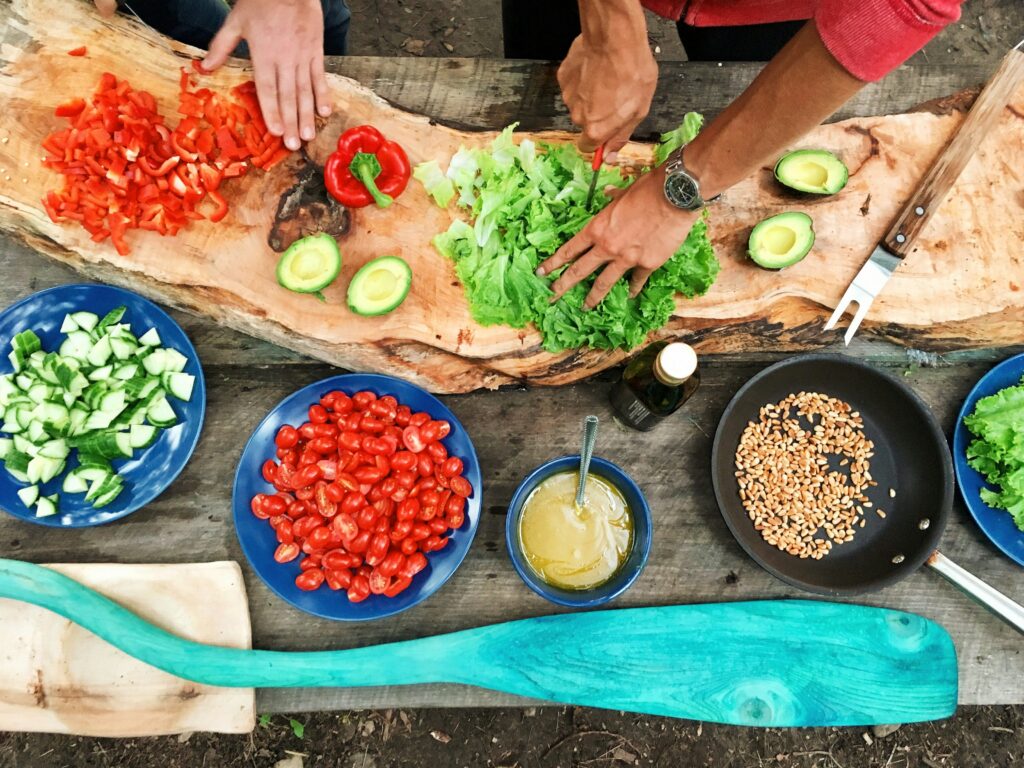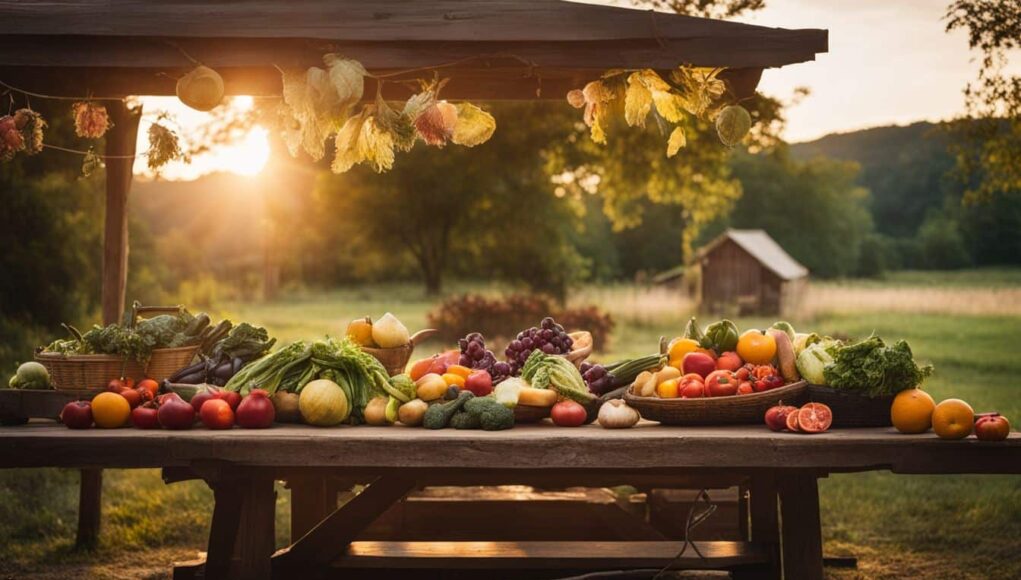In recent years, the farm-to-table movement has gained immense popularity, emphasizing the importance of fresh, local ingredients and sustainable practices. This culinary revolution is not just about food; it’s a lifestyle choice that connects people with the land, the farmers, and the seasons. For those looking to immerse themselves in this philosophy, countryside retreats offer the perfect escape. Imagine waking up to the sound of roosters crowing, enjoying breakfast made with eggs from the farm’s chickens, and savoring dinner crafted from produce harvested just hours earlier. This blog post explores the best countryside retreats where travelers can embrace the slow food movement, indulge in local flavors, and experience the beauty of rural life.

***
Contents
- Understanding the Slow Food Movement
- Top Countryside Retreats for Farm-to-Table Experiences
- Participating in Farm Activities
- Local Markets and Culinary Tours
- Dining Experiences to Savor
- Planning Your Countryside Retreat
- Conclusion
- FAQs
***
Understanding the Slow Food Movement
The Slow Food Movement originated in Italy in the 1980s as a response to the fast food culture that was spreading globally. It promotes local food traditions, sustainable farming, and biodiversity. The movement encourages consumers to appreciate the origins of their food and to support local farmers and artisans. By choosing to eat locally sourced meals, travelers not only enjoy fresher and tastier food but also contribute to the local economy and environment. This philosophy is at the heart of many countryside retreats, where guests can participate in farm activities, cooking classes, and communal meals that celebrate local ingredients.
***
Top Countryside Retreats for Farm-to-Table Experiences
Several countryside retreats across the globe embody the farm-to-table ethos. Here are some of the top destinations to consider:
- Blue Hill at Stone Barns, New York, USA: This renowned farm and restaurant offers immersive experiences where guests can learn about sustainable farming practices. Prices for a meal can range from $198 for a multi-course tasting menu. Workshops on farming and cooking are also available.
- La Ferme de la Ruchotte, Burgundy, France: This charming farm stay allows guests to participate in the daily workings of the farm, from milking cows to harvesting vegetables. Rates start at €90 per night, including breakfast made from farm-fresh ingredients.
- Finca Rosa Blanca, Costa Rica: Nestled in the Central Valley, this eco-lodge offers farm tours and cooking classes that highlight local produce. Rates start at $200 per night, and guests can enjoy meals prepared with ingredients sourced from the on-site organic farm.

***
Participating in Farm Activities
One of the most rewarding aspects of staying at a countryside retreat is the opportunity to engage in farm activities. Many retreats offer hands-on experiences such as:
- Harvesting: Guests can join in the harvest of seasonal fruits and vegetables, learning about the growing process and the importance of seasonal eating.
- Animal Care: Interacting with farm animals, such as feeding chickens or milking cows, provides a deeper understanding of farm life.
- Cooking Classes: Many retreats offer cooking classes that focus on preparing meals with the ingredients harvested from the farm, allowing guests to learn new culinary skills.
These activities not only enhance the travel experience but also foster a connection to the food being consumed, making each meal more meaningful.
***
Local Markets and Culinary Tours
Beyond the farm, local markets are a treasure trove of fresh produce, artisanal products, and regional specialties. Visiting these markets allows travelers to experience the local culture and flavors. Here are some tips for exploring local markets:
- Timing: Markets are often held on specific days of the week. Research the schedule to ensure you visit when the market is bustling with vendors.
- Engage with Vendors: Don’t hesitate to ask vendors about their products and farming practices. Many are eager to share their stories and offer samples.
- Cooking Classes: Some retreats offer culinary tours that include visits to local markets, where guests can select ingredients for their cooking classes.
These experiences not only provide fresh ingredients but also a chance to learn about local culinary traditions and recipes.
***
Dining Experiences to Savor
Dining at a countryside retreat often means enjoying meals that are thoughtfully prepared, showcasing the best of local produce. Many retreats offer communal dining experiences, where guests can share meals and stories. Here are some dining highlights to look for:
- Seasonal Menus: Many retreats change their menus based on what is in season, ensuring that guests enjoy the freshest ingredients.
- Farm-to-Table Dinners: Some retreats host special dinners featuring multi-course meals prepared with ingredients sourced directly from their farms.
- Wine Pairings: In regions known for wine production, such as Tuscany or Napa Valley, expect to find expertly paired wines that complement the local cuisine.
These dining experiences not only satisfy the palate but also create lasting memories of shared meals and conversations.
***
Planning Your Countryside Retreat
When planning a trip to a countryside retreat, consider the following practical tips:
- Book in Advance: Popular retreats can fill up quickly, especially during peak seasons. Booking several months in advance is advisable.
- Check for Packages: Many retreats offer packages that include accommodations, meals, and activities at a discounted rate.
- Transportation: Research transportation options, as some retreats may be remote. Renting a car might be necessary for exploring the surrounding areas.
By planning ahead, travelers can ensure a smooth and enjoyable experience at their chosen retreat.
***
Conclusion
Embracing the slow food movement through a countryside retreat offers a unique opportunity to connect with nature, savor fresh local cuisine, and support sustainable practices. Whether it’s participating in farm activities, exploring local markets, or enjoying communal meals, travelers can immerse themselves in the rich tapestry of rural life. With careful planning and an open mind, a farm-to-table experience can be both enriching and delicious, leaving lasting memories of the flavors and stories of the land.
***
FAQs
What’s the best time of year to visit?
The best time to visit countryside retreats largely depends on the region and the type of produce you wish to experience. Spring and summer are ideal for fresh fruits and vegetables, while autumn is perfect for harvest festivals. For example, visiting Tuscany in September allows travelers to enjoy grape harvests and wine festivals, while a trip to the French countryside in June offers an abundance of fresh produce and vibrant flowers.
How much should I budget for this trip?
Budgeting for a countryside retreat can vary widely based on location and activities. On average, travelers should expect to spend between $150 to $300 per night for accommodations, with meals ranging from $30 to $100 per person, depending on the dining options. Activities such as cooking classes or farm tours may add an additional $50 to $150. Overall, budgeting around $500 to $800 per day for a couple can provide a comfortable experience.
What should I pack for a countryside retreat?
When packing for a countryside retreat, consider the following essentials: comfortable clothing suitable for outdoor activities, sturdy shoes for walking or hiking, a reusable water bottle, sunscreen, and insect repellent. If participating in cooking classes, bringing an apron can be a nice touch. Additionally, a camera is essential for capturing the beautiful landscapes and memorable moments.
Are there any safety concerns to be aware of?
While countryside retreats are generally safe, travelers should be aware of their surroundings, especially when participating in outdoor activities. It’s advisable to stay hydrated and protect against sun exposure. If visiting farms with animals, follow safety guidelines provided by the hosts. Additionally, check for any local wildlife warnings, especially in rural areas.
How can I get to the countryside retreats?
Transportation options vary by location. Many countryside retreats are accessible by car, and renting a vehicle is often the most convenient option. Some retreats may offer shuttle services from nearby airports or train stations. Researching public transportation options in advance can also help travelers plan their journeys effectively.
What local customs should I be aware of?
Understanding local customs can enhance the travel experience. In many rural areas, hospitality is paramount, and guests are often welcomed with open arms. It’s polite to greet hosts and fellow guests, and expressing gratitude for meals is appreciated. Additionally, learning a few basic phrases in the local language can go a long way in building rapport with locals.
Any insider tips for a successful farm-to-table experience?
To make the most of a farm-to-table experience, engage actively with the hosts and ask questions about their farming practices and culinary techniques. Participating in as many activities as possible will enrich the experience. Lastly, don’t hesitate to try new foods and flavors; the essence of the farm-to-table movement is about exploration and appreciation of local cuisine.


















